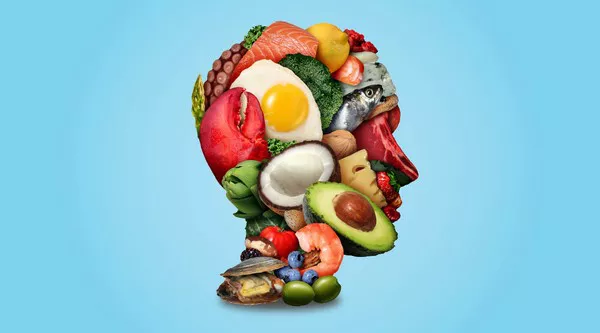In recent years, the consumption of plant-based diets has gained significant traction due to growing concerns about health, sustainability, and ethical considerations. As a result, the spotlight has turned to vegetable proteins as a crucial component of these diets. Vegetable proteins are derived from plant sources and offer a multitude of benefits that make them a viable alternative to animal-based proteins. In this article, we will delve into the world of vegetable protein, exploring its definition, sources, nutritional value, health benefits, and potential drawbacks, and how to incorporate it into diet.
Defining Vegetable Protein
Vegetable protein, also known as plant-based protein, refers to proteins obtained from various plant sources. These sources encompass a wide range of foods, including legumes (such as lentils, beans, and peas), nuts, seeds, whole grains, and certain vegetables. Unlike animal proteins, which originate from meat, dairy, and eggs, vegetable proteins offer a non-animal alternative that is rich in essential nutrients.
Sources of Vegetable Protein
There are various sources of vegetable protein:
1. Legumes: Legumes are a staple source of vegetable protein, boasting high protein content along with fiber and other nutrients. Lentils, chickpeas, black beans, and soybeans are examples of legumes rich in protein.
2. Nuts and Seeds: Nuts and seeds are not only great sources of healthy fats but also contain appreciable amounts of protein. Almonds, chia seeds, pumpkin seeds, and sunflower seeds are commonly consumed options.
3. Whole Grains: Whole grains like quinoa, brown rice, and oats provide not only carbohydrates but also a notable protein content, making them valuable additions to plant-based diets.
4. Vegetables: While vegetables generally contain lower protein content compared to other sources, they still contribute to overall protein intake. Spinach, broccoli, and Brussels sprouts are some examples of protein-containing vegetables.
5. Soy Products: Soy-based products, including tofu, tempeh, and edamame, are exceptional sources of complete protein, meaning they provide all essential amino acids required by the body.
SEE ALSO: 10 Vegetables High in Protein: A Guide for Vegetarians
Nutritional and Health Value of Vegetable Protein
Vegetable proteins offer a wide array of nutrients beyond just protein content. They are typically lower in saturated fats and cholesterol compared to animal-based proteins. Additionally, they often come bundled with dietary fiber, vitamins, minerals, and antioxidants, contributing to a more wholesome dietary package.
1. Heart Health: The lower saturated fat content of vegetable proteins can be advantageous for cardiovascular health. Diets rich in vegetable proteins have been associated with reduced risk factors for heart disease, such as lower cholesterol levels and blood pressure.
2. Weight Management: Vegetable proteins can aid in weight management due to their higher fiber content. Fiber promotes satiety and helps control appetite, potentially leading to reduced calorie consumption.
3. Digestive Health: The fiber found in many plant-based protein sources supports a healthy digestive system by promoting regular bowel movements and fostering a diverse gut microbiota.
4. Reduced Chronic Disease Risk: Plant-based diets, which are inherently rich in vegetable proteins, have been linked to a decreased risk of chronic diseases like type 2 diabetes, certain cancers, and hypertension.
5. Environmental Sustainability: Vegetable proteins contribute to a more sustainable food system. Producing plant-based proteins generally requires fewer natural resources, generates lower greenhouse gas emissions, and uses less land compared to animal-based protein production.
Considerations and Drawbacks of Vegetable Protein
While vegetable proteins offer numerous benefits, it’s important to be mindful of potential drawbacks as well.
1. Amino Acid Profile: Some vegetable proteins may lack certain essential amino acids, which are the building blocks of protein. Combining different protein sources can help create a more balanced amino acid profile.
2. Digestibility: Certain plant-based proteins contain compounds that might interfere with nutrient absorption. Cooking, soaking, and fermenting these foods can enhance their digestibility and nutrient availability.
3. Allergies and Sensitivities: Nuts, soy, and gluten-containing grains are common allergens. Individuals with allergies or sensitivities should be cautious and explore alternative protein sources.
4. Protein Quantity: Plant-based diets may require more careful planning to ensure sufficient protein intake, especially for individuals with high protein needs, such as athletes or those looking to build muscle.
Incorporating Vegetable Protein into Your Diet
For those considering a plant-based diet or simply aiming to include more vegetable protein in their meals, here are some practical tips:
1. Diversify Sources: Incorporate a variety of plant-based protein sources to ensure a balanced nutrient intake.
2. Combine Complementary Proteins: Combining different protein sources, such as legumes with whole grains, can help create a complete amino acid profile.
3. Explore Meat Alternatives: Many innovative meat alternatives made from vegetable proteins are now available in the market, offering texture and flavor resemblant of animal-based products.
4. Pay Attention to Nutrient Intake: While focusing on protein, don’t overlook other essential nutrients such as vitamins, minerals, and healthy fats.
Cooking and Food Preparation Techniques Enhancing the Availability of Vegetable Protein
Certain cooking and food preparation techniques can enhance the quality and availability of vegetable protein, making it more digestible and nutritionally beneficial. Here are some techniques to consider:
1. Soaking and Sprouting
Soaking legumes (beans, lentils, chickpeas) and grains before cooking can improve their digestibility. Soaking initiates the germination process, which breaks down antinutrients like phytates and tannins that can hinder nutrient absorption. Sprouting takes this process further, increasing the availability of vitamins, minerals, and enzymes.
2. Cooking and Boiling
Cooking legumes and grains at appropriate temperatures can further reduce antinutrients and improve protein digestibility. Boiling lentils, beans, and whole grains until they are soft can break down complex carbohydrates and enhance nutrient absorption.
3. Fermentation
Fermentation is another technique that can improve protein quality and digestibility. Foods like tempeh and miso are products of fermentation, and this process can help break down proteins and increase the bioavailability of nutrients.
4. Pairing Complementary Proteins
Combining different plant-based protein sources can create a more balanced amino acid profile. For example, consuming legumes with whole grains, such as beans and rice, provides a more complete set of essential amino acids.
5. Using Healthy Fats
Incorporating healthy fats in your meals can enhance the absorption of fat-soluble vitamins and certain nutrients. Add sources of healthy fats, such as avocado, nuts, seeds, and olive oil, to your dishes containing vegetable protein.
6. Chopping and Blending
Chopping, blending, or processing certain protein-rich foods can make them easier to digest and more bioavailable. For instance, blending nuts into a nut butter or incorporating them into smoothies can break down cell walls and improve nutrient absorption.
7. Avoid Overcooking
Overcooking vegetables can lead to nutrient loss, including protein. Opt for methods like steaming, sautéing, or roasting to preserve the nutritional content of vegetables.
8. Seasoning and Spices
Using herbs, spices, and seasonings can not only enhance the flavor of your dishes but also aid digestion. Ingredients like ginger, turmeric, cumin, and fennel can have digestive benefits.
9. Preparing Balanced Meals
Creating balanced meals that incorporate a variety of nutrient-dense foods can optimize nutrient absorption. Combine vegetables, protein sources, healthy fats, and whole grains to create well-rounded and nourishing dishes.
10. Varied Diet
Lastly, diversity is key. Consuming a wide range of protein sources ensures that you receive a spectrum of nutrients and amino acids. Don’t rely solely on one type of vegetable protein; instead, rotate through various sources.
Delicious Recipes Incorporating Vegetable Protein
Incorporating vegetable protein into your meals can be both nutritious and delicious. Here are some creative and tasty recipe ideas that highlight the versatility of plant-based proteins:
1. Quinoa and Black Bean Bowl
Ingredients:
Cooked quinoa
Cooked black beans
Sautéed vegetables (bell peppers, onions, zucchini)
Avocado slices
Salsa or pico de gallo
Lime juice
Chopped cilantro
Instructions:
Assemble a bowl with cooked quinoa as the base.
Top with black beans, sautéed vegetables, and avocado slices.
Drizzle with salsa or pico de gallo and a splash of lime juice.
Garnish with chopped cilantro for a burst of flavor.
2. Tofu Stir-Fry
Ingredients:
Firm tofu, cubed
Assorted stir-fry vegetables (broccoli, carrots, bell peppers, snap peas)
Soy sauce or tamari
Garlic and ginger, minced
Sesame oil
Cooked brown rice or noodles
Instructions:
Sauté minced garlic and ginger in sesame oil.
Add cubed tofu and stir-fry until lightly browned.
Add assorted vegetables and stir-fry until tender-crisp.
Drizzle with soy sauce or tamari for flavor.
Serve over cooked brown rice or noodles for a satisfying meal.
3. Chickpea Salad Wrap
Ingredients:
Canned chickpeas, drained and rinsed
Diced cucumbers, tomatoes, red onions
Chopped parsley
Lemon juice
Olive oil
Salt and pepper
Whole-grain wraps or tortillas
Instructions:
In a bowl, combine chickpeas, diced vegetables, and chopped parsley.
Drizzle with lemon juice and olive oil.
Season with salt and pepper to taste and mix well.
Spoon the chickpea salad onto whole-grain wraps or tortillas.
Roll up and enjoy a refreshing and protein-rich wrap.
4. Lentil Curry
Ingredients:
Cooked lentils (green or red)
Coconut milk
Curry paste or powder
Chopped onion and garlic
Diced tomatoes
Spinach or kale
Basmati rice or naan bread
Instructions:
Sauté chopped onion and garlic in a pot.
Add curry paste or powder and cook briefly.
Stir in diced tomatoes and cooked lentils.
Pour in coconut milk and simmer until flavors meld.
Add spinach or kale and cook until wilted.
Serve the curry over basmati rice or with naan bread.
5. Peanut Butter and Banana Protein Smoothie
Ingredients:
Plant-based protein powder (pea, hemp, soy)
Ripe banana
Natural peanut butter
Almond milk
Ice cubes
Instructions:
In a blender, combine a scoop of plant-based protein powder, a ripe banana, a spoonful of natural peanut butter, and a cup of almond milk.
Add ice cubes for thickness and blend until smooth.
Pour into a glass and enjoy a protein-packed and flavorful smoothie.
Feel free to experiment with different combinations of ingredients and spices to create meals that suit your taste preferences and dietary requirements.
Comparing Vegetable Protein Alternatives: Soy, Pea, and Hemp
As the interest in plant-based diets continues to grow, the market for plant-based protein alternatives has expanded significantly. Among the plethora of options available, soy, pea, and hemp proteins stand out as popular choices due to their nutritional profiles, versatility, and potential health benefits. We will delve into a comparative analysis of these three prominent vegetable protein alternatives.
1. Soy Protein
Overview: Soy protein is derived from soybeans and is one of the most well-known plant-based protein sources. It’s considered a complete protein, containing all essential amino acids in sufficient quantities.
Nutritional Highlights:
Rich in protein, with around 20-25 grams of protein per 100 grams.
Contains all essential amino acids, making it comparable to animal-based proteins.
Low in saturated fats and cholesterol.
Source of various vitamins and minerals, including iron, calcium, and B vitamins.
Health Benefits:
Heart Health: Soy protein has been linked to reduced LDL cholesterol levels, contributing to improved cardiovascular health.
Hormone Regulation: Some compounds in soy, like isoflavones, may have potential health benefits related to hormone balance.
Bone Health: The presence of calcium and other minerals in soy can support bone health.
2. Pea Protein
Overview: Pea protein is derived from yellow split peas and is renowned for its high protein content and digestibility.
Nutritional Highlights:
Contains approximately 20-25 grams of protein per 100 grams.
Lacks some essential amino acids, but is particularly high in lysine, which is often limited in other plant proteins.
Low in fat and carbohydrates.
Naturally free of major allergens like gluten and dairy.
Health Benefits:
Muscle Building: Pea protein’s rich amino acid profile, particularly its high leucine content, makes it effective for promoting muscle protein synthesis.
Satiety: Pea protein’s high fiber content supports feelings of fullness and can aid in weight management.
Kidney Function: Unlike animal proteins, pea protein doesn’t contribute to kidney strain, making it suitable for those with kidney concerns.
3. Hemp Protein
Overview: Hemp protein is derived from hemp seeds and is a unique option due to its blend of protein, healthy fats, and other nutrients.
Nutritional Highlights:
Contains around 20-25 grams of protein per 100 grams.
Offers a balanced ratio of essential fatty acids (omega-3 and omega-6).
Rich in fiber, which supports digestion and satiety.
Contains minerals such as magnesium, iron, and zinc.
Health Benefits:
Omega Fatty Acids: Hemp protein provides a plant-based source of omega-3 and omega-6 fatty acids, supporting heart and brain health.
Digestive Health: The fiber content in hemp protein can aid in maintaining a healthy gut.
Nutrient Diversity: Hemp protein brings a range of nutrients, contributing to an overall balanced diet.
4. Comparison and Considerations
Amino Acid Profile: Soy protein is a complete protein, whereas pea and hemp proteins may lack certain essential amino acids. Combining complementary protein sources can address amino acid imbalances.
Digestibility: Pea protein is generally well-tolerated and easy to digest, making it suitable for those with sensitivities. Soy and hemp proteins might cause digestive discomfort for some individuals.
Allergens: Soy and pea proteins are allergen-friendly options, while hemp protein may trigger allergies in those sensitive to hemp seeds.
Fiber Content: Hemp and pea proteins are high in fiber, supporting digestive health and satiety. Soy protein has lower fiber content but is still beneficial.
Fatty Acids: Hemp protein offers unique omega fatty acids, contributing to heart and brain health.
Versatility: All three proteins can be incorporated into various recipes, such as smoothies, baked goods, and savory dishes.
5. Choosing the Right Protein for You
The choice between soy, pea, and hemp protein depends on individual preferences, dietary needs, and any potential allergens or sensitivities. Those seeking a complete protein with potential heart benefits might lean towards soy. Individuals focused on muscle building and digestion could opt for pea protein, while those aiming for a nutrient-rich profile might prefer hemp protein. A well-rounded approach could involve rotating between these options to maximize nutritional diversity.
Conclusion
In the realm of nutrition and dietary choices, vegetable proteins have emerged as a versatile and sustainable option. With their potential health benefits, reduced environmental impact, and adaptability to various culinary traditions, plant-based proteins offer a compelling alternative to animal-based proteins. By understanding their sources, nutritional value, benefits, and considerations, individuals can make informed decisions to enhance their overall well-being while contributing to a more sustainable food future.
[inline_related_posts title=”Related Topics” title_align=”left” style=”list” number=”3″ align=”none” ids=”1429,1343,1314″ by=”categories” orderby=”rand” order=”DESC” hide_thumb=”no” thumb_right=”no” views=”no” date=”yes” grid_columns=”1″ post_type=”” tax=””]

































